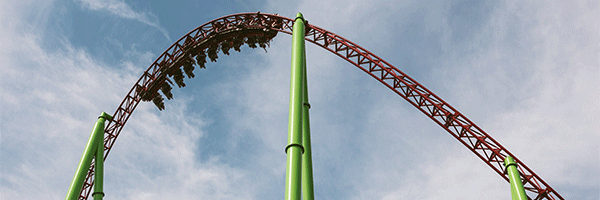Forget about a “V-shaped” recovery or a “W-shaped” bounce-pullback-move up again recovery.
The talk on Wall Street is now about a “K-shaped” recovery where a handful of companies and their shares sooar ahead but where the average company and its stock lags way, way behind.
The Standard & Poor’s 500 and the NASDAQ Composite have hit new all-time intraday highs again today. The S&P 500 has recovered all its losses in the March plunge and more.
To recap a few numbers from recent market history. The S&P 500 hit a closing high of 3386.5 on February 19. It then plunged 1036.23 pints or 30.6% to 2304.92 on March 23.
The rally that then set in took the index back to 3397.16 at the Friday August 24 close for a gain from the March 23 bottom of 1092.24 points or 47.39%.
And that rally has now taken the index back and a little more to where it stood at the February 19 closing high.
But 20% of the stocks in the S&P 500 index are still 50% lower than their all-time high. The average stock in the index, according to data from Cornerstone Macro published by the Financial Times, is down 28.4% from its 2020 high.
What’s behind this huge divergence?
The startlingly outperformance of technology stocks in general and of a handful of mega market cap stocks in particular.
You know the names. Just five stocks–Apple (AAPL), Microsoft (MSFT), Amazon (AMN), Alphabet (GOOG), and Facebook (FB)–account for more than a quarter of the rally since March. Apple, for example, is up 60% in 2020. Amazon is up 78%. And with their enormous market capitalizations (Apple, for example, has a market cap of $2 trillion), these stocks have been the big movers in the indexes, which are themselves market cap weighted. (Apple has a larger market cap than the combined market capitalization of the bottom third of the S&P 500 stocks.)
Under the circumstances, it’s not surprising that the technology sector was up 27% in 2020 as of August 21 and ahead 13.6% from the February 19 high.
But because of what stocks are assigned to what sectors, the effect of these big winners has had a heavy influence in some unexpected areas. The consumer discretionary sector is the most startling example. That sector has gained 15.5% from the February 19 high as of August 21. But after a recent reorganization of its market sector membership by Standard & Poor’s, Amazon became a member of the consumer discretionary sector where it makes up 43% of the sector index.
Which all sets up a number of “interesting” problems for investors. First, the big five stocks that have paced this rally may now be too richly priced but given the uncertainties about the U.S. economy, the same ability to grow during the coronavirus pandemic that made them safe havens in recent months is likely to keep them climbing in the near term–at least until visible growth in other sectors of the economy gives investors and traders an alternative place to put their money. In other words if the economy continues to look uncertain, why would anyone move money out of these stocks? The overvalued look likely to become even more overvalued for a while.
Second, the huge weighting of these stocks in the big market indexes means that all that cash from flowing into U.S. market indexes from investors will work to support these stocks and their prices. It might take a general souring on U.S. financial assets to send the prices of the big five stocks down.
Three, the fact that so much of the market’s direction and valuation is wrapped up in these few stocks–and that the prices of those stocks are getting ever more extended–does raise the risk of a sudden reversal in the market and its indexes. In the case of so much concentration, it is “prudent” to worry about rising risk. It doesn’t make me worry less that the VIX, the S&P 500 volatility index, continues to fall. That shows that Wall Street remains extraordinarily complacent about the risk in this market over the short-term of a month or two. The VIX fell another 0.58% today, August 24, to 22.41 at the close. The VIX, the so-called “fear index,” peaked at 82.69 back on March 16 and was still at 40.79 on June 11.


